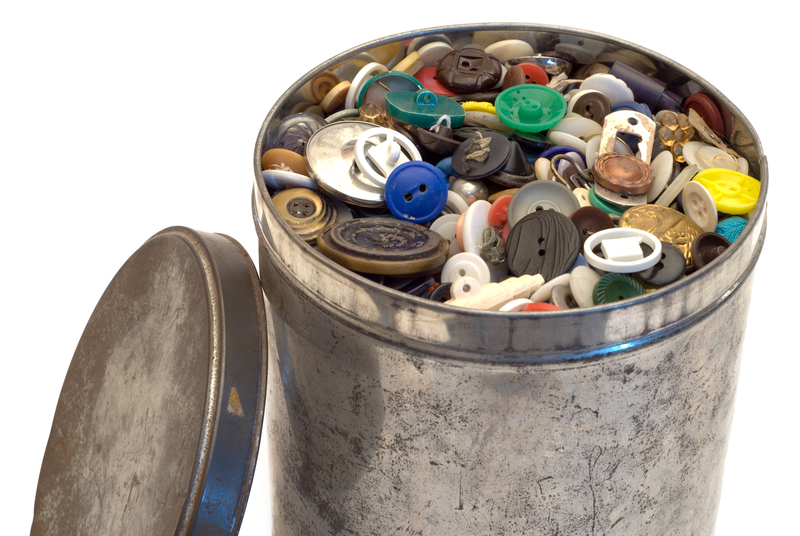How to Get the Most Value When Disposing of Bulky Waste Items
Disposing of large, unwanted items can be a challenging and occasionally costly process--unless you know how to maximize your returns and minimize your environmental impact. Whether you're clearing out a home, renovating, or simply trying to declutter, learning how to get the most value when disposing of bulky waste items is essential. This comprehensive guide will walk you through practical strategies for responsible disposal, environmentally-friendly options, and even ways to earn money or save on costs.
Understanding Bulky Waste: What Qualifies?
Bulky waste, also known as large waste items, includes those materials that are too large or heavy to fit into standard trash bins or regular curbside collection. Examples include:
- Furniture (sofas, armchairs, mattresses, bed frames)
- Appliances (refrigerators, washers, dryers)
- Electronics (large TVs, old computers)
- Outdoor equipment (grills, swing sets, lawn mowers)
- Renovation debris (carpeting, cabinetry, doors, bathtubs)
The disposal methods and potential value recovery vary greatly depending on the item type and its condition. The following sections outline how to get value out of bulky waste items while reducing landfill contributions.

Key Strategies to Extract Value from Bulky Waste Disposal
1. Evaluate the Condition of Your Large Waste Objects
Before making any decisions, closely inspect each item's condition. Ask yourself:
- Is it still functional or intact?
- Could minor repairs restore its value?
- What brand or materials is it made of?
- Does it have any antique or collectible appeal?
Well-maintained or easily repairable bulky items can often be sold or donated, rather than sent to landfill. Even items with significant wear may have salvageable parts or materials.
2. Sell Valuable Items - Monetize Your Bulky Waste
One of the best ways to maximize value when disposing of bulky items is by selling those that are still usable or upcyclable. Here's how:
- Online Marketplaces: List items on platforms like Facebook Marketplace, Craigslist, eBay, or OfferUp. Include clear photos, honest descriptions, and details about condition or age.
- Specialized Apps: Try LetGo or Nextdoor for hyperlocal selling.
- Garage Sales: Host a yard or moving sale to efficiently move multiple bulky pieces.
- Consignment Stores: Furniture and antique shops may accept unique or vintage pieces for a share of the sale price.
Tips for Successful Sales:
- Clean and repair items where feasible.
- Highlight branded or high-end materials.
- Be realistic with pricing but open to negotiation.
3. Donate Usable Large Items
If you don't have time for sales or want to contribute to a good cause, consider donating bulky items. Many charities and non-profits accept furniture, appliances, and even select electronics:
- Habitat for Humanity ReStores
- Salvation Army
- Goodwill
- Local churches or shelters
Donations can often be tax deductible--keep your receipt!
4. Repurpose or Upcycle for Added Value
Looking for a creative route? Upcycling bulky waste items into something new can either save you money or provide a fun DIY project:
- Turn an old door into a rustic table
- Repurpose pallets into garden furniture
- Convert a vintage dresser into a unique vanity
This approach is eco-friendly and may even let you sell "upcycled" items at a premium to those seeking unique decor.
5. Recycle to Recover Materials
When an item cannot be reused or sold, recycling bulky waste is the next best way to extract value and help the environment. Many bulky items contain recyclable materials, such as:
- Metals (steel, aluminum from appliances or bed frames)
- Wood (often recyclable if untreated)
- Electronics (circuit boards, wires, plastics)
- Glass from large mirrors or tabletops
Contact your local recycling center for drop-off options, or use services specializing in e-waste or appliance recycling.
Cost-Effective Disposal Options
Proper disposal needn't break the bank. Here are some ways to cut costs when disposing of bulky items:
Use Municipal Bulky Item Collection
Many cities provide annual or monthly bulk waste pickup services for residents. While some communities offer it free of charge, others may require a small fee or pre-scheduling. Always check your local municipality's rules on:
- What items are acceptable
- Scheduling and pickup limits
- Preparation instructions (do you need to disassemble?)
Leverage "Free" Removal Days or Events
Watch for community clean-up events, electronics recycling drives, or "free dump days" where large items are accepted at no charge. Search your city or county waste management calendar for upcoming opportunities.
Enlist Local Junk Removal Companies
If time is money, hiring a junk removal company may offer the best value when disposing of bulky waste items, especially if you have quantity or can't transport yourself. Reputable companies often include:
- Loading and hauling
- Sorting of recyclable or donatable materials (sometimes at no extra charge)
- Proper disposal at licensed facilities
Always get upfront quotes to compare fees.
Consider Rentable Dumpsters for Major Cleanouts
For renovation debris or whole-home junk-outs, renting a dumpster can be a cost-effective and efficient solution. Shared dumpsters with neighbors can lower your per-household cost, too.
How to Prepare Bulky Waste for Disposal or Collection
Preparing items properly can save you time, money, and favors with whoever is picking them up:
- Disassemble if possible: Remove legs from tables, take apart frames, or break down large sections to smaller bundles.
- Drain and secure appliances: Empty refrigerator or freezer units, drain washing machines, and tape shut loose doors or cords.
- Label hazardous components: Batteries, refrigerants, or chemicals may require special handling.
- Wrap fragile materials: Use old blankets or cardboard to prevent damage or injury from glass and sharp edges.
Well-prepared bulky waste items speed up removal and can improve your chances of donation or resale.
Common Mistakes to Avoid When Disposing of Large Items
- Ignoring Local Disposal Laws: Dumping large items illegally can result in hefty fines and environmental harm.
- Paying Before Exploring Free or Profitable Options: Always try to sell, donate, or recycle before considering paid removal.
- Not Researching Tax Benefits: Failing to get receipts for charitable donations can mean missed tax deductions.
- Overlooking Valuable Materials: Scrappers and recyclers may pay for metal, wiring, or other components--don't give them away unknowingly!
Environmental Considerations: Reducing Waste & Carbon Footprint
Proper management of bulky waste items doesn't just save you money--it also protects the planet. Here's how to increase environmental value from your disposal process:
- Divert as much as possible from landfill by selling, donating, or recycling.
- Choose eco-friendly hauling services that use green disposal practices or donate on your behalf.
- Repurpose locally to reduce emissions from transporting waste long distances.
- Avoid putting hazardous materials in regular trash, as these can contaminate soil and water sources.
Special Waste Streams: Electronics, Appliances, and Mattresses
Electronic waste (e-waste) often contains toxic substances and precious metals. Look for certified e-waste recyclers or municipality-sponsored events. Appliance and mattress recycling is increasingly available in many regions, and some states even mandate it. Check local programs before curb disposal.
Additional Ways to Save During Bulky Waste Disposal
1. Pool Resources with Neighbors
If several homes on your block have bulky waste, coordinate a joint pickup or shared dumpster rental. This approach lowers costs and is often more convenient for collection services.
2. Watch for Manufacturer or Retailer Takeback Programs
Some big retailers and manufacturers offer free removal or trade-in credits when you buy a replacement appliance or mattress. Always ask at the time of purchase.
3. Schedule Disposal During Moving or Renovation Projects
Large-scale moves or remodels often result in multiple items for disposal. By consolidating into a single pickup or dumpster rental, you'll save on transportation and service fees.

Quick Reference: Disposal Methods & Potential Value Recovery
| Disposal Method | Best For | Potential Value |
|---|---|---|
| Sell (Online/Local) | Usable furniture, appliances, collectables | Cash return, space saved |
| Donate | Good condition, gently used items | Tax deduction, good deed |
| Recycle | Metal, electronics, certain plastics | Material recovery, environment benefit |
| Upcycle/Repurpose | DIY-friendly items (wood, parts, old furniture) | Personal use or higher-value resale |
| Paid Removal | Non-reusable, unsafe or damaged junk | Convenience, time saved |
Final Tips: How to Get the Most Value When Disposing of Bulky Waste Items
The key takeaway:
- Assess each item for resale, donation, or recycling potential before paying for landfill removal.
- Leverage free local drop-off, community recycle days, or municipal pickups whenever possible.
- Consider environmental impact--responsible disposal protects nature for the next generation.
- Get creative with upcycling or part sales to unlock unexpected value.
With a little planning and resourcefulness, disposing of bulky waste items can give you cash, help your community, and reduce your ecological footprint. Next time you're faced with that unwanted sofa or outgrown appliance, you'll know exactly how to get the most out of your old bulk--and send less to waste.